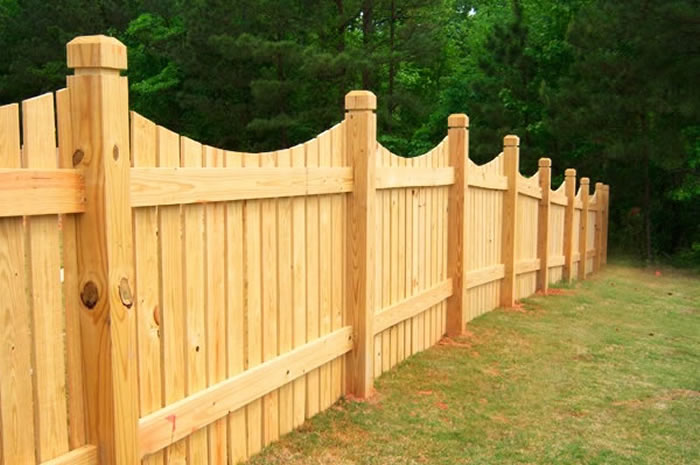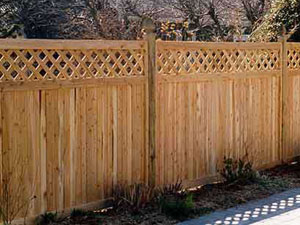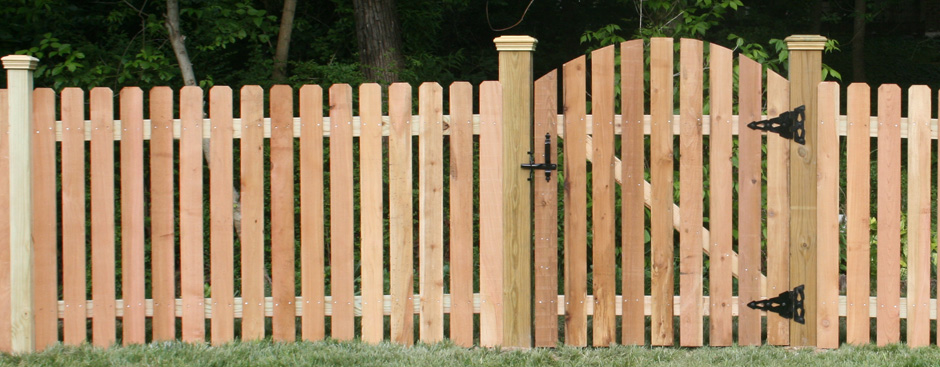Several things to consider before choosing your wooden fence:
- Your budget
- The purpose of the fence – is it for privacy? or security? or a decorative feature? or both? or to keep wildlife out? or something else entirely?
- The time and expertise required to build a fence
- Long-term maintenance of your wooden fence
Picket Wooden Fence
Picket wooden fence are well-known by their neat, evenly spaced vertical boards and usually are generally used as an attractive boundary – mostly at front gardens. They do not provide privacy but do mark out the boundary clearly and supply a nice aesthetic. In addition they provide a safe boundary for the children and larger pets – although anything smaller than a dog will probably disappear between the panels! Generally just under 1 metre high and often painted white, picket wooden fence are easy to install with posts. Picket wooden fence are mostly made from wood but now can be bought in PVC for a low-maintenance finish.
Closeboard Wooden Fence
Closeboard wooden fence are excellent regarding to the privacy and are often designed with overlapping vertical feather edge boards. Each individual board is nailed to (usually 3) horizontal rails called arris rails and these in turn are usually supported by notched articles. If you are intending on erecting a closeboard woden fence, you need to know this specific from the outset as special notched article need to be purchased and place in further apart than for standard fence panels. These closeboard wooden fence are strong and usually upwards of 6th feet tall (although you can make them smaller) meaning they are ideal for creating a secure and private boundary. They are usually most commonly used in rear gardens, especially as many places have height restrictions located on front aspect boundary fencing (you should check this out in your own area before installing a new wooden fence! ).
Traditional Lap Panel Fences
This is actually the most common type of garden wooden fencing and 1 of the easiest for your novice DIYer to install. Lap panel fences could be purchased in panels and attached to wooden fence panels using 2 or 3 U-shaped post clips per panel. If you have chosen cement posts then lap panels can simple be placed in – although if your posts are all up it is definitely a 2-man job in order to lift them up to the top to slot them in! Lap panel fences contain a frame with horizontal overlapping boards slotted between. They have a more rustic {appearance than a closeboard wooden fence.
Composite Wooden Fence Panels
There is a growing trend for composite wooden fence as it offers such a low maintenance method to boundary wooden fence. These wooden fence are a lot more expensive but require minimal maintenance and are not necessarily subject to some of the problems associated with wooden fence. They will not necessarily split or splinter and often come with really long guarantees (sometimes around 20 years). Composite wooden fence are made from composite wooden panels and are usually available in many various shapes and sizes. It is probably to cost a fair bit more, perhaps than even closeboard wooden fence but it depends on the look you are going for plus the amount of maintenance you want to do. If you choose for a composite wooden fence, bear in mind that Owatrol’s winning pair of products designed specifically for composite wooden fence. Compo Clean is the composite wood cleaner and de-greaser which will rapidly and easily remove any built-up dirt and grease from all composite areas. Compo Care is the composite wood reviver created specifically for protecting and refreshing the colour of composite wooden fence surfaces.









